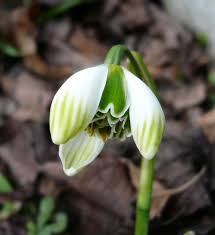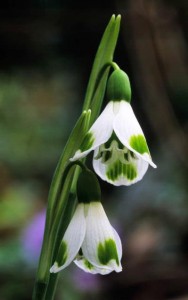Well, there are very many. Very many hybrids were found in the vicinity of English country houses, where many Galanthuses were planted during the Crimean war (from October 1853 to February 1856).
Bumblebees and bees have provided for the hybrids. The only thing that the enthousiast had to do was to go out in spring and see if there were any abnormal shapes. And that has happened on a large scale. But even now, every spring hundreds of people visit the places where snowdrops grow in large numbers. Usually it is not known who the ancestors of the hybrids are, but the trained eye can often see whether it was from a Galanthus plicatus, elwesii, or nivalis.
But even in larger, modern collections, new shapes are found on a regular basis. Using modern techniques such as twin scaling or chipping, such a bulb is quickly propagated and brought to market.
Actual planned hybridization of certain ancestors with each other is not performed often. Firstly, it is quite a lot of tinkering and secondly, it takes four years for the formed seeds to develop into a flowering little plant. And then it remains to be seen what comes out!
Double snowdrops cultivated by Heyrick Greatorex, the so called Greatorex-hybrids
Heyrick Greatorex (d. 1954) was a conscript cavalry officer during the First World War and a captain in “The Home Guard” (well known from Dad’s Army) during the Second World War. Later he led a secluded life: he lived in a converted railway carriage, in the back of his garden, in the village of Brundall near Norfolk.
In the 1940s he used the pollen of G. nivalis “Flore Pleno” for hybridization with Galanthus plicatus. This resulted in a whole range of double hybrids. These hybrids were large, grew well and with their large showy flowers, they caused a sensation.

Greatorex named most of his cultivated hybrids after female protagonists from the works of Shakespeare. It is unfortunate that there is no original, clear description or illustration of the originally cultivated material. Also, nothing is known about the way these hybrids were spread amongst friends and acquaintances. This probably means that names and hybrids have been confused frequently in the course of time. It may well be that amongst enthousiasts two different hybrids are carrying the same name.
Making your own hybrids
As mentioned before, not easy, but very interesting to do. Would it not be nice to make a hybrid between a Galanthus with yellow flowers and one with, for example, green outer petals? Keeping in mind a descendant with yellow outer petals?
How do we proceed? First of all, a father and mother must be found. The mother must give good and plenty of seed (note that many double Galanthuses do form pollen, but no seed). Both ancestors must be very healthy and have characteristics that would be nice if they would show up in the offspring. Making hybrids is actually no more and no less than applying the pollen of the father on the stigma of the mother. But… because the flower parts are so small, this poses a little problem. Both parents should actually flower at the same time, and that may not be the case. Furthermore, one must ensure that the mother pollenates herself, which means that the stamens must be removed before the pollen is released. Also, bees and bumblebees may not be allowed to carry pollen from one plant to another. Using a small brush, you apply the pollen from the father onto the stigma of the mother. Then a small bag, made from lace curtain, is put over the pollinated flower. That way, you know that the flower has been pollinated, no foreign pollen will come near it, and that ants will not go off with the seeds at a later stage. The seed will be ripe around late May, early June and should then be sown in a well drained soil directly. Use a mixture of equal parts leaf mould and John Innes No 1 compost. Cover the seed with a very shallow layer of soil and put a layer of fine gravel on top. Place the pot in a cold frame, or in a sheltered spot outside. Keep the soil moist. Label it, noting the hybrids ancestors. In spring, the seeds will germinate, like thin green threads. Leave these seedlings in the same pot for at least a year. Afterwards, the little bulbs can be planted in the garden or in lattice baskets. Three to four years after sowing, the offspring will flower, and you will see what beauty has developed.

Because many Galanthuses are hybrids, something special can emerge from the seed of such as a hybrid. Simply by allowing the plant to self-pollinate. In this way, many beautiful shapes were derived from the hybrid Galanthus Trym.